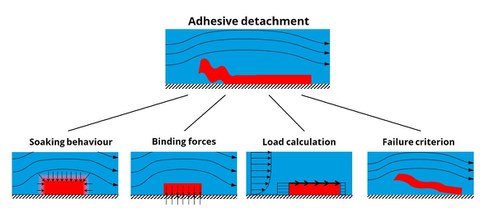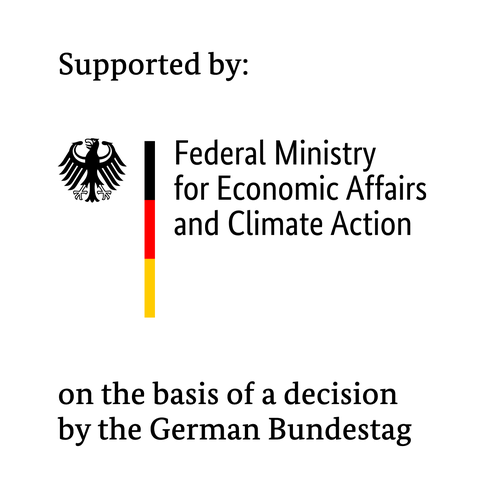Experimentally supported models for industry-compatible numerical cleaning simulation 1 + 2
Product diversity is increasing in the food industry. Small batches are requested more and more frequently, which then have to be produced one after the other on the same line. In order to nevertheless meet constantly increasing quality demands, the aspect of plant cleaning is becoming increasingly important. An experimental optimisation of the cleaning process for each product is not possible for reasons of efficiency. This is why industrial cleaning systems are often oversized - too long cleaning times or too many additives are used, which both reduces the productivity of the plant and drives up water consumption and costs for water treatment.
The aim of the project series is to formulate simplified numerical models that can be used to efficiently predict cleaning times. The solution approach is to characterise types of pollution in terms of their behaviour during cleaning. For each type of cleaning mechanism, a boundary condition formulation was developed that can be combined with the flow simulation of the cleaning fluid. The quality and efficiency of the cleaning simulation using these models were tested by means of cleaning experiments.
The focus of the current project is the extension of the modelling to possible changes in the cleaning mechanism due to different exposure times to the cleaning fluid and locally different fouling as well as the simulation of cleaning cycles with a time sequence of different process conditions, e.g. pre-rinse, clean, post-rinse.

Schematic of a developed cleaning model for adhesive detachment. Is applied in the cleaning simulation of dried ketchup
| Cooperation |
Professur für Verarbeitungsmaschinen/Verarbeitungstechnik, Institut für Naturstofftechnik, Technische Universität Dresden |
| Funding | AiF (IGF-Vorhaben 17805 BR und 21334 BR) |
| Contact |
This research project is supported by the Industrievereinigung für Lebensmitteltechnologie und Verpackung e. V. (IVLV), the Arbeitsgemeinschaft industrieller Forschungsvereinigungen “Otto von Guericke” e. V. (AiF) and the Federal Ministry of Economic Affairs and Energy (17805 BR and 21334 BR).

